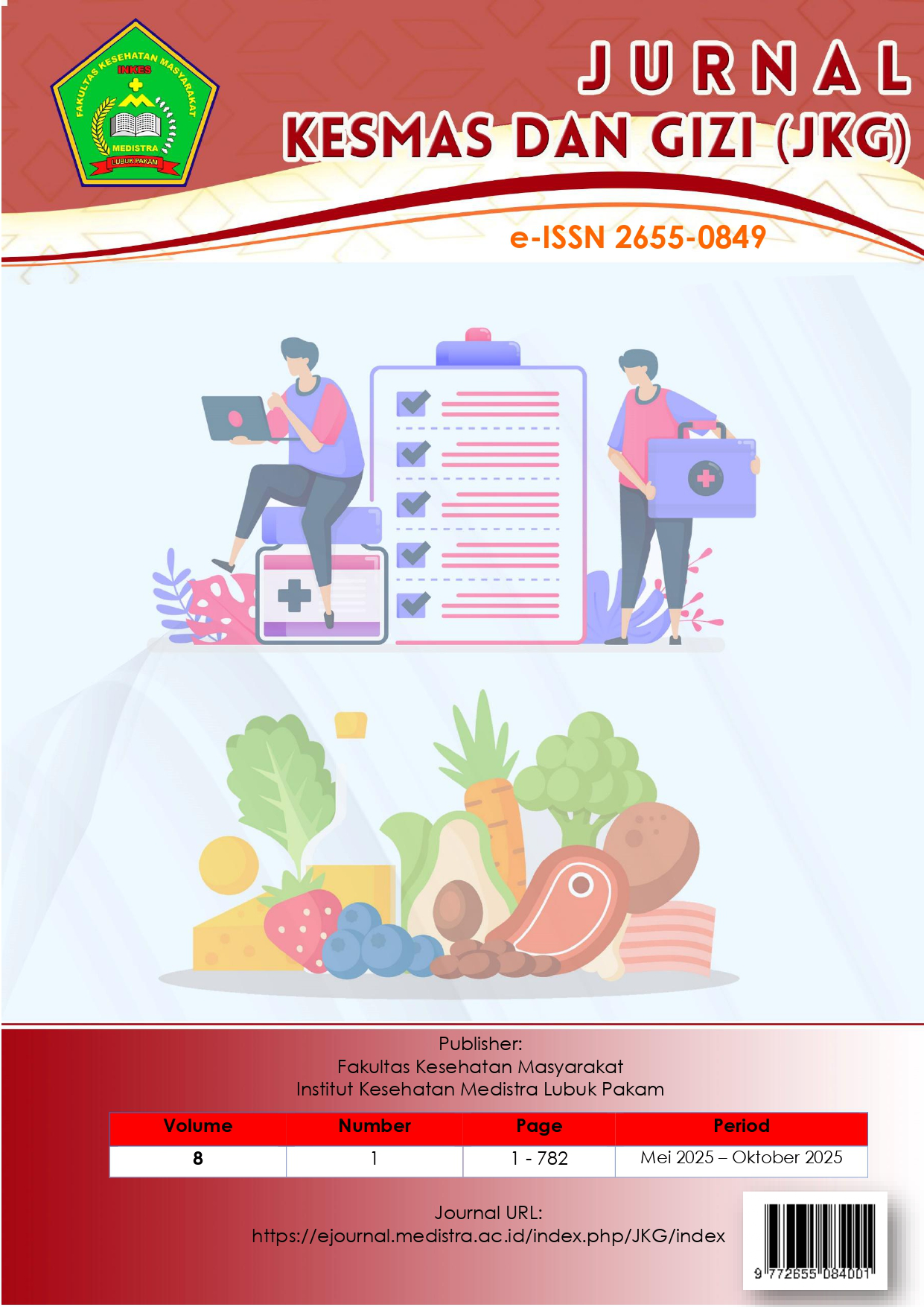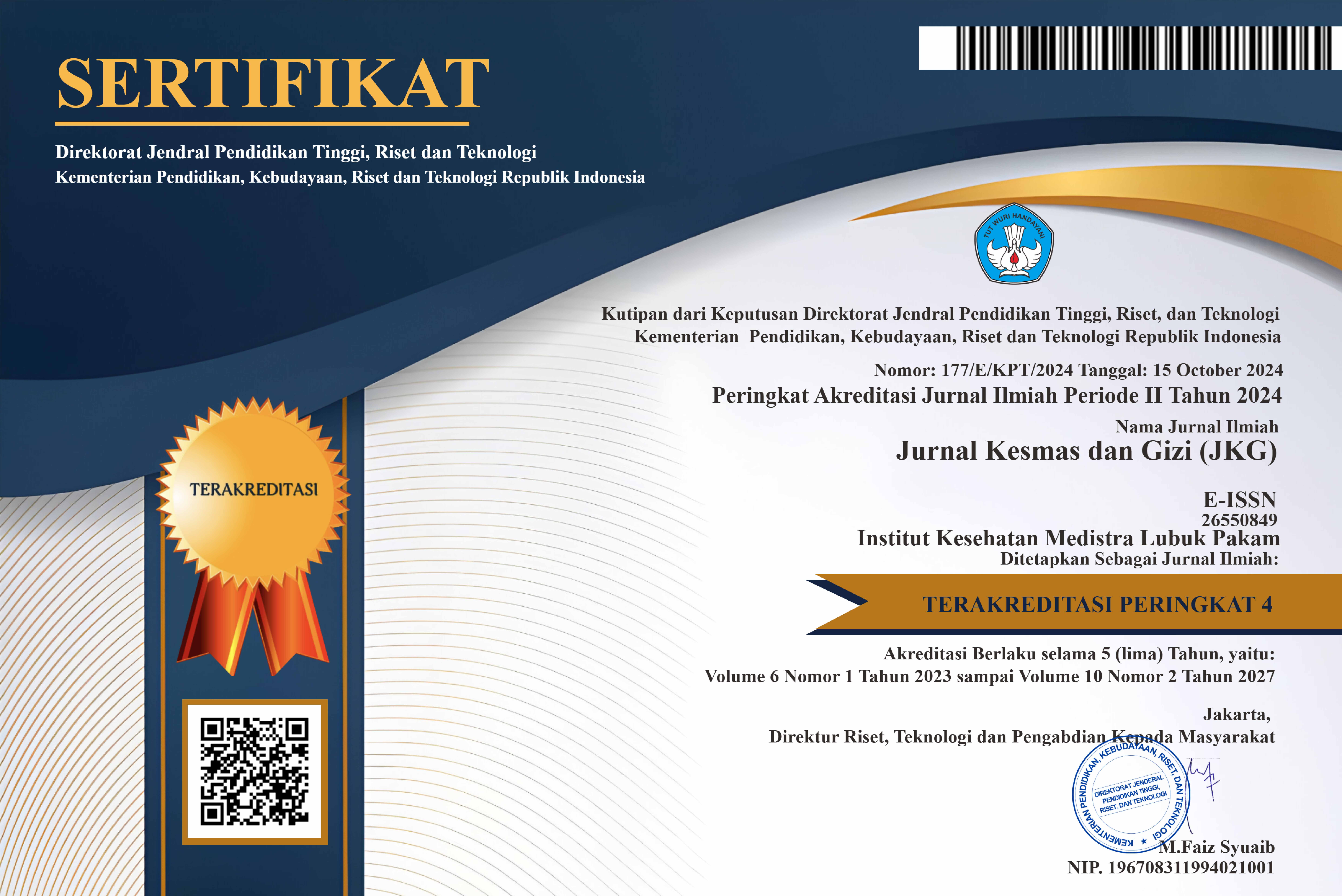The Effect of Splitting on Reducing Pain Scale in Closed Fracture Patients at Grandmed Hospital Lubuk Pakam
DOI:
https://doi.org/10.35451/14q4w751Keywords:
Pain Scale, Splint Application, Closed FractureAbstract
A splint is one of the nursing interventions used to fixate or immobilize injured body parts, particularly in cases of fractures. The primary function of a splint is to stabilize bone fragments and prevent displacement that may worsen the patient’s condition. In fractures, pain arises not only from tissue, nerve, and vascular damage but also from the uncontrolled movement of bone fragments. This pain can affect the cardiovascular, endocrine, respiratory, and immune systems, and may trigger both physiological and psychological stress. Therefore, pain management is a crucial component of fracture care and can be addressed through pharmacological interventions such as analgesics, as well as non-pharmacological methods, including splinting. This study aimed to examine differences in pain scores among fracture patients before and after splint application. A quantitative design with a one-group pretest-posttest approach was employed. The sample consisted of 25 respondents selected using purposive sampling. Pain scale observations were conducted before and after the intervention, and data were analyzed using the Paired Sample T-Test with a significance level of 0.05. The results showed a probability value of p = 0.000 (p < 0.05), indicating a significant difference between pretest and posttest pain scores. It can be concluded that splint application has a significant effect in reducing pain levels among patients with closed fractures at Grandmed Hospital, Lubuk Pakam.
Downloads
References
[1] I. Swarup and N. K. Pandya, “Pain Management in Acute Fracture Care: Current Concept Review,” J. Pediatr. Orthopaed. Soc. N. Am. (JPOSNA), vol. 3, no. 1, 2021.
[2] F. B. Andrade-Silva, J. P. Rocha, A. Carvalho, et al., “Influence of postoperative immobilization on pain control of patients with distal radius fracture treated with volar locked plating: a prospective randomized clinical trial,” Injury, 2019.
[3] Riskesdas. (2018). Laporan Riskesdas 2018 Kementrian Kesehatan Jawa Tengah Republik Indonesia. In Laporan Nasional Riskesdas 2018.
[4] J. V. H. Budnik, T.F. Higgins, A.M. Malfait, J.A.P. Weinrich, A.I. Basbaum, J.R. Hsu, S. Morshed, and C.S. Bahney. “New paradigms in pain management after skeletal trauma: Orthopaedic Trauma Association's 2023 Basic Science Focus Forum Symposium, 2025. OTA Int. 2025 Apr 1;8(2 Suppl):e352. doi: 10.1097/OI9.0000000000000352.
[5] S. I. Rafiqi, A. W. S. Budi, dan Y. E. Romaningsih, “Pengaruh Pemberian Bidai terhadap Penurunan Tingkat Nyeri pada Pasien Fraktur: Studi Kasus,” J. Penel. Perawat Prof., vol. 7, no. 2, 2024. Available: https://doi.org/10.37287/jppp.v7i2.6449
[6] Andri, J., Febriawati, H., Padila, P., J, H., & Susmita, R. (2020). Nyeri pada Pasien Post Op Fraktur Ekstremitas Bawah dengan Pelaksanaan Mobilisasi dan Ambulasi Dini. Journal of Telenursing (JOTING), 2(1), 61–70.
[7] Novitasari, S., Immawati, & Nurhayati, S. (2021). Penerapan Manajemen Nyeri Distraksi Story Telling Pada Anak Prasekolah (3-5 Tahun) Saat Tindakan Invasif Pemasangan Infus. Jurnal Cendikia Muda, 1(1), 122–128.
[8] Yazid, B., & Rahmadani Sidabutar, R. (2024). Pengaruh Pembidaian Terhadap Penurunan Skala Nyeri Pada Pasien Fraktur Di RSU Sundari Medan. JINTAN: Jurnal Ilmu Keperawatan, 4(1), 36–45. https://doi.org/10.51771/jintan.v4i1.68.
[9] Kurniasari, R., Al-Afik, & Utama, C. W. (2024). Case Report Penurunan Tingkat Nyeri Pada Pasien Fraktur Femur Dengan Balut Bidai Di IGD RSUD Tidar Kota Magelang. 2(2), 162–170.
[10] M. Farzad, J. C. McDermid, S. Mehta, R. Grewal, E. Shafiee, “Early post-immobilization pain at rest, movement evoked pain, and their ratio as potential predictors of pain and disability at six- and 12-months after distal radius fracture,” Arch. Physiother., vol. 11, art. no. 6, 2021
[11] O. Pakarinen, A. J. Saarinen, V. T. Ponkilainen, et al., “Soft bandage, splint or cast as the treatment of distal forearm torus fracture in children: a systematic review and meta-analysis,” Sci. Rep., vol. 14, art. no. 21052, 2024.Candra Susanto, P., Ulfah Arini, D., Yuntina, L., Panatap Soehaditama, J., & Nuraeni, N. (2024). Konsep Penelitian Kuantitatif: Populasi, Sampel, dan Analisis Data (Sebuah Tinjauan Pustaka). Jurnal Ilmu Multidisplin, 3(1), 1–12.
[12] Suriani, N., Risnita, & Jailani, M. S. (2023). Konsep Populasi dan Sampling Serta Pemilihan Partisipan Ditinjau Dari Penelitian Ilmiah Pendidikan. Jurnal IHSAN: Jurnal Pendidikan Islam, 1(2), 24–36. https://doi.org/10.61104/ihsan.v1i2.55
[13] Muzakky, A. N., Dhedie, A., Kidingallo, Y., & Mula, F. (2024). Faktor- Faktor yang Mempengaruhi Tingkat Keberhasilan Terapi pada Fraktur Terbuka dan Tertutup. Pendidikan Tambusai, 8(1), 11030–11037.
[14] Haq, R. K., Ismail, S., & Erawati, M. (2019). Studi Eksplorasi Manajemen Nyeri pada Pasien Post Operasi dengan Ventilasi Mekanik. Jurnal Perawat Indonesia, 3(3), 191. https://doi.org/10.32584/jpi.v3i3.307
[15] P. J. Snelling, Minimal intervention (removable splint or bandage) for the, 2024. [Online]. Available: https://www.sciencedirect.com/science/article/pii/S0020138324006260
[16] H. Ma, B. Ruan, J. Li, J. Zhang, C. Wu, H. Tian, Y. Zhao, D. Feng, W. Yan, X. Xi, “Topology-Optimized Splints vs Casts for Distal Radius Fractures: A Randomized Clinical Trial,” JAMA Netw Open, vol. 7, no. 2, e2354359, 2024.
[17] G. Wang, L. Huo, Y. Xu, et al., “Clinical observation on the treatment of displaced distal radial and ulnar fractures in children by closed manipulation combined with splinting,” Front. Surg., vol. 10, 1199437, 2023.
Downloads
Published
Issue
Section
License
Copyright (c) 2025 Abdi Lestari Sitepu

This work is licensed under a Creative Commons Attribution 4.0 International License.
Copyright in each article is the property of the Author.


























